Treating lameness
2 min read
Lameness treatment in cows is crucial for quick recovery. This page details how to effectively treat various hoof conditions such as white line disease, sole bruising, hoof wall crack, and digital dermatitis. Treatment involves reshaping hooves, reducing pressure on lesions, removing damaged horn, and providing pain relief. If a cow doesn’t improve within a week after treating her, seek professional help. Your veterinarian or hoof trimmer can assist with treatment and staff training.
Effective lameness treatment is critical and ensures a faster recovery for the cow. Those treating cows need proper training and experience. Contact your local vet or hoof trimmer to enrol in a treatment course. In a published study which surveyed 100 New Zealand farms, farmers reported lack of time and skilled staff as a key barrier to managing lameness. Working with a hoof trimmer can help overcome these issues, as they have the skills and equipment to handle cows quickly and safely.

Regular herd lameness scoring is essential. Cows often hide pain until it’s severe, so formal scoring helps catch issues early. Aim for fortnightly scoring using the lameness scoring guide, but checking half the herd at cups-off every two months is a great start. Do what works for your system, which may include the use of technology like cameras and wearables to save staff time.

Once identified, trim and treat cows promptly for the best outcome. Good facilities and training are vital for safe trimming and applying hoof blocks. Record all cases in your herd management software.
Provide NSAID injections and hoof blocks to every lame cow unless there’s a clear reason not to. Research shows these treatments significantly improve recovery times and reproductive outcomes.

Create a monitoring plan to track recovery. Ensure proper nutrition to prevent excessive body condition loss. Minimise time on concrete and reduce walking distances, once-a-day milking can help. Keep lame cows on pasture with easy access to water and good-quality feed.
Ensure you have adequate facilities and use the correct techniques for handling cows. Good facilities improve lame cow management by reducing stress for you and the cow and improve access to the hooves for trimming.
Return hooves to the ideal shape so that they are balanced, more able to support the cow's weight and less likely to be affected by future problems. Reduce pressure on a lesion by removing the under-run horn around the lesion. This reduces pinching and aggravation of the lesion by the hard horn. It also allows dirt and slurry to drain from around the lesion which decreases the chance of an abscess forming.
Transfer the weight to the other healthy claw by either paring down the sole of the affected claw and/ or putting a block/slip on the healthy claw. Blocks should be used by default, unless there’s an obvious reason not to (e.g. a lesion on the opposite claw). This transfer of weight helps cows to walk with less pain and aids healing.
Avoid causing bleeding and, trimming too deep. Provide pain relief as per your veterinary prescription. The vast majority of lameness in New Zealand is caused by white line disease and sole lesions and generally won’t require antibiotics.
If a cow does not heal or improve within one week after treatment, contact your veterinarian.
White line disease
Step 1:
Open up the white line at the bottom and the top (if there is a breakout) to allow drainage. Make sure the edges aren’t left sharp, as they will pinch on tissue.
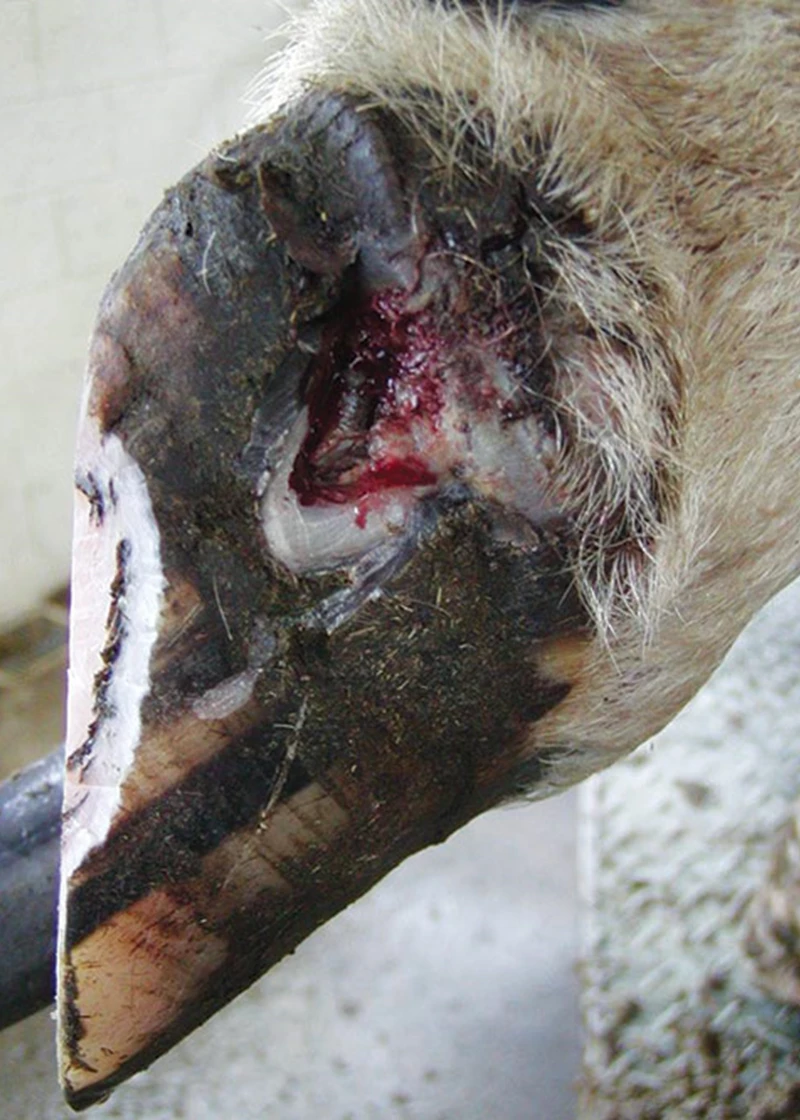
Step 2:
If there is a breakout at the top, you will need to remove the whole side wall; do not leave a bridge.

Step 3:
Ensure there is no pressure on the injured site by paring all under-run sole and/or wall. Take the weight off the affected claw by applying a block or slipper to the healthy claw.
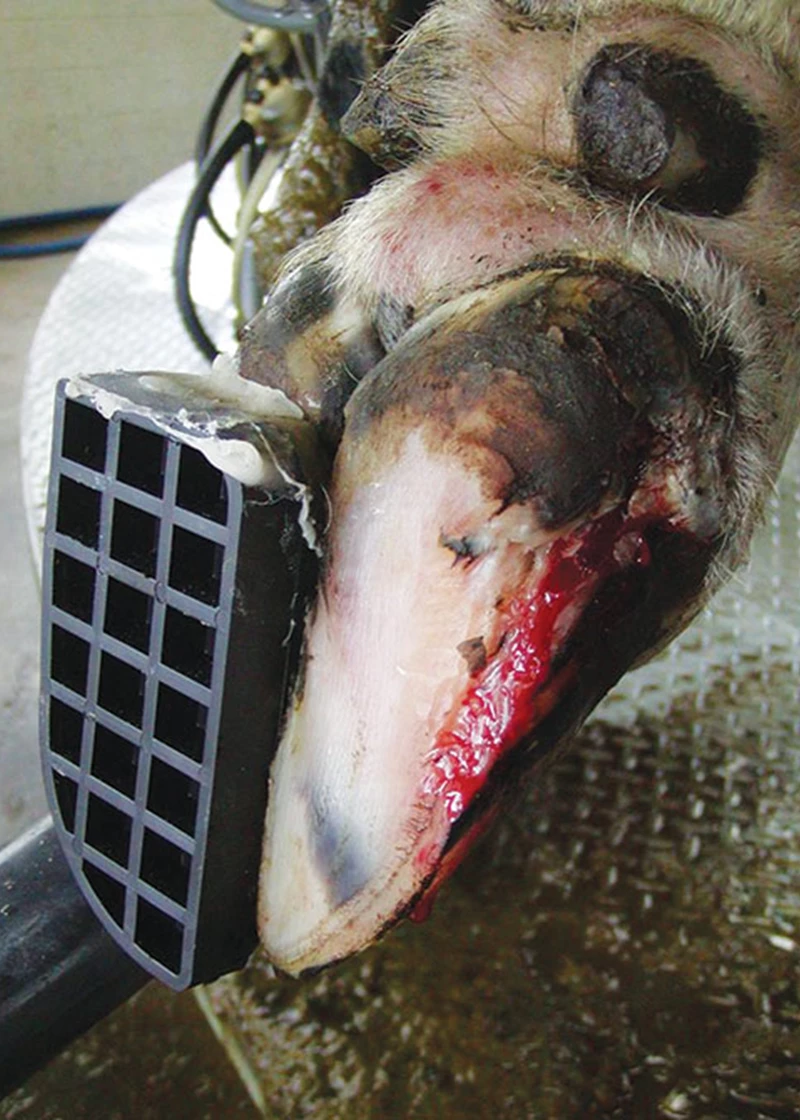
Sole bruising (or haemorrhage)
Step 1:
Treat as per step 2 only if the bruising is an obvious point of pain, otherwise many of these cows can be put in a lame mob and monitored as most will self-resolve.
Step 2:
Keep the cow close to the shed and consider once-a-day milking. If one claw is involved, consider applying a block/ cowslip to the unaffected claw. This will keep the bruised claw off the ground and immediately relieve pain.
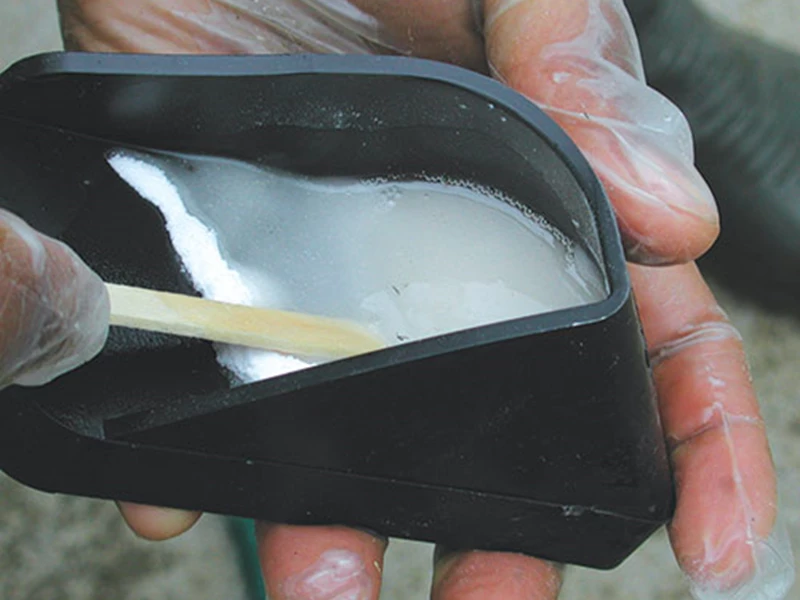
Step 3:
Revisit the cow in 5-7 days, simple bruising should heal within a week.
Sole abscess/ulcer
Step 1:
Open up the hole or area in the sole and release any pus.
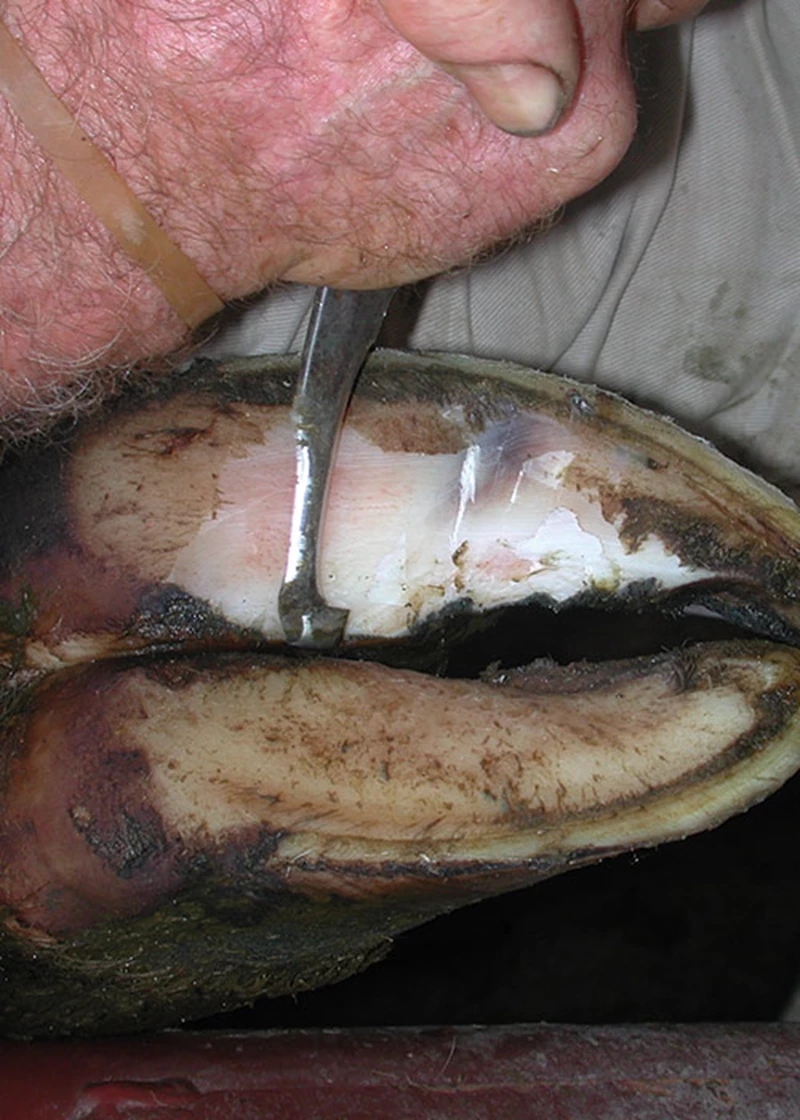
Step 2:
Abscess/ulcer - Pare away all under-run sole. Can sometimes be the entire sole.

Step 3:
Transfer weight on to healthy claw by either paring back the sole of the affected claw (if possible) and applying a block/slip to the healthy claw unless inappropriate to do so.
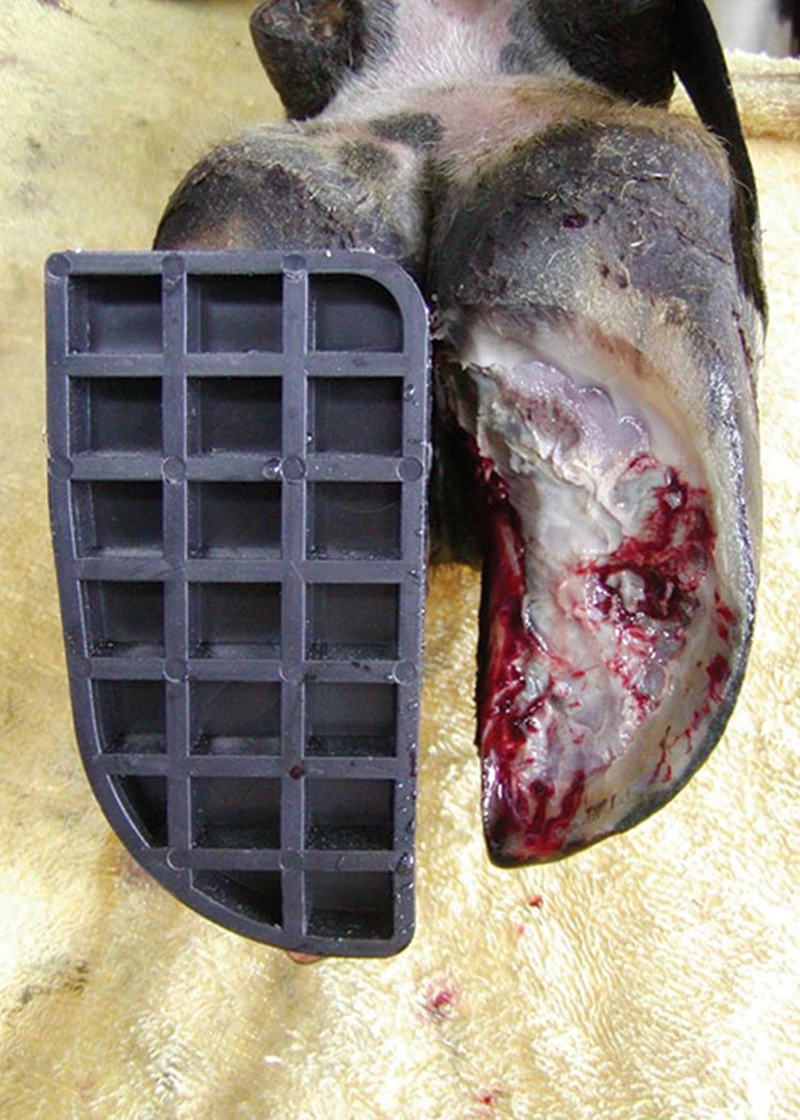
Hoof wall crack
Step 1:
Remove all under-run horn both sides of the crack.
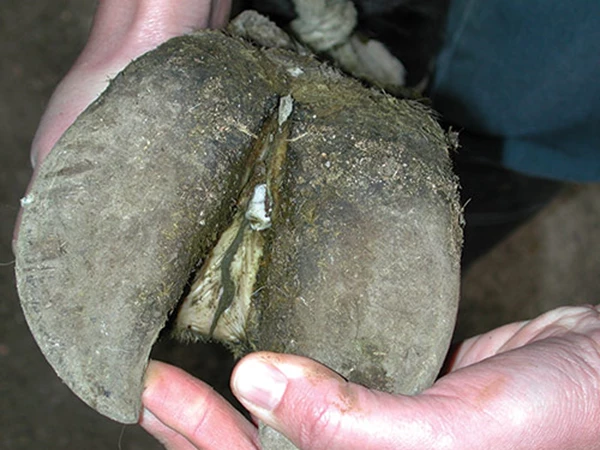
Step 2:
Pare the sole below the crack to transfer pressure away from the crack.
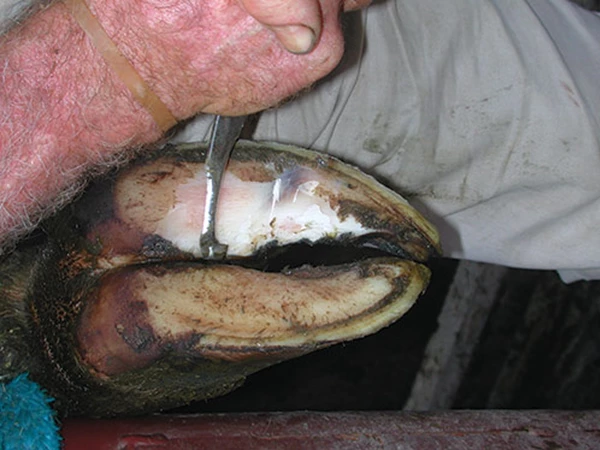
Step 3:
Place a block or slip on the healthy claw unless inappropriate to do so.
Foot rot
Step 1:
Clean out the cracked skin between the claws. Check for and remove any small stones.
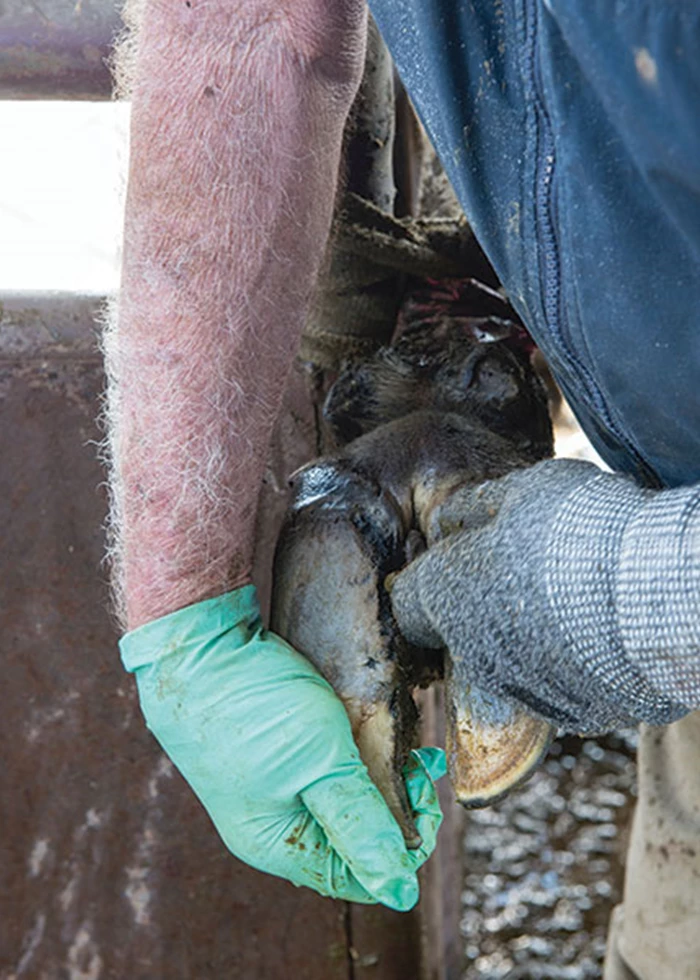
Step 2:
Spray with antiseptic/iodine.

Step 3:
Treat the cow with injectable antibiotics and pain relief as prescribed by your vet.
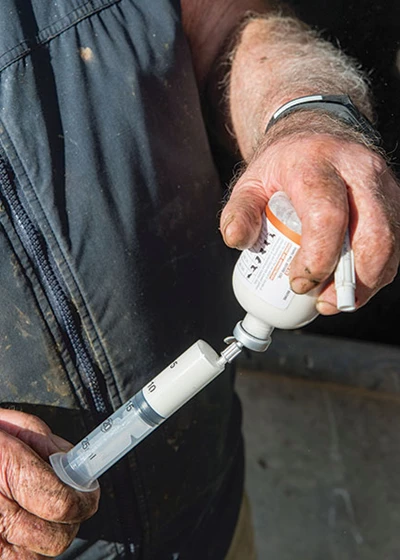
Digital dermatitis
Step 1:
Seek veterinary advice – it is important to accurately diagnose the disease as it is contagious and can be challenging to control.
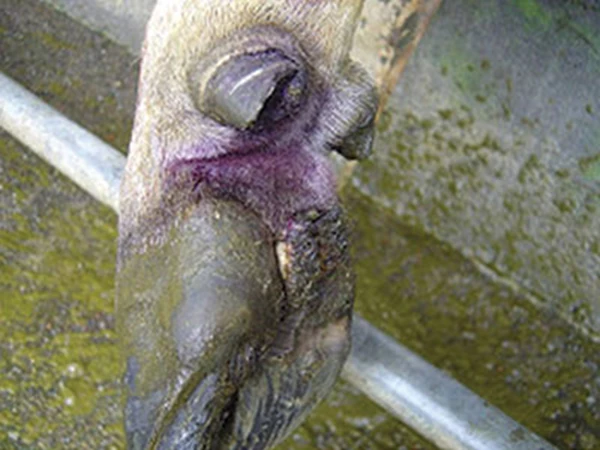
Step 2:
Clean the ulcer or wart with water.
Step 3:
Dry then spray with antibiotic or disinfectant spray from your vet, allow to dry, then spray again. Repeat this treatment for two more days. If you have multiple cases, talk to your vet about a foot bath or other management options.
Now’s the perfect time to check in, plan, and set up for a strong season. We’ve pulled together smart tips and tools to help you stay ahead all winter long.
Whether you prefer to read, listen, or download handy guides, we’ve got you covered with trusted tools to support your journey every step of the way.
Put our proven strategies and seasonal tools to work. Boost production, support animal health and watch your profits hum.
Tools that are backed by science, shaped by farmers and made for this season.
That’s Summer Smarts.